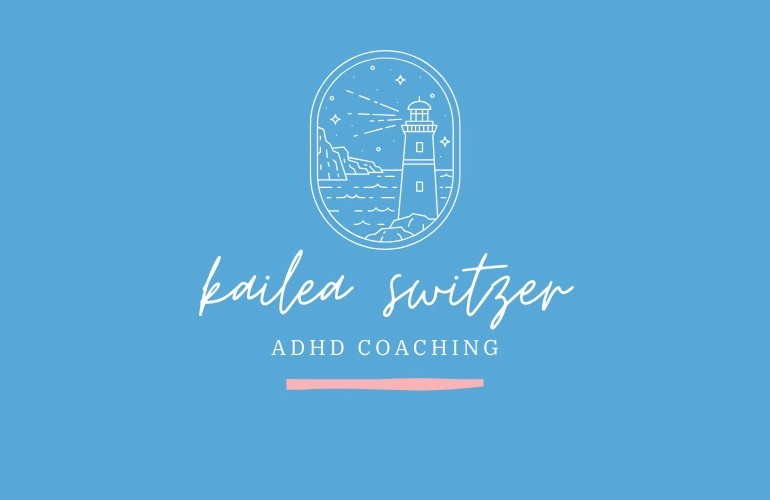2.6.1: An Introduction to ADHD
Attention Deficit Hyperactivity Disorder (ADHD) is one of the most common neurodevelopmental disorders in Canada, affecting 4-6% of adults.1 In other words, 1 of every 21 people in the country has ADHD.2

ADHD is a developmental impairment of the brain’s self-management system or ‘executive functions.’3 This refers to the mental skills that allow us to plan, focus attention, remember instructions, and juggle multiple tasks successfully.
ADHD is not a specific learning disability, nor is it a mental illness, behaviour disorder, or about laziness. ADHD is distributed across individuals of all intellectual levels, and many individuals with ADHD have high IQ’s and are highly creative.
The Diagnostic and Statistical Manual of Mental Disorders (DSM) historically referred to three subtypes of ADHD. Now we refer to the below as different presentations of ADHD because an individual can move from one presentation to another during different life phases (i.e., a child may present as hyperactive, but in adolescence may seem less impulsive and instead present with more inattentiveness).
- Primarily hyperactive-impulsive (act as if ‘driven by a motor’ and have challenges with impulse control, e.g.: blurting out)
- Primarily inattentive (formerly called ADD, easily distracted and forgetful, ‘daydreamers’, often go undiagnosed as children because they tend not to disrupt learning environments)
- Primarily combined (display a mixture of both listed above)4
Symptoms of someone presenting with hyperactivity could look like:
- Fidget and squirm while seated.
- Be constantly in motion or on the go, or act as if driven by a motor.
- Talk excessively.
- Answer questions before they are fully asked, finish other people’s sentences, interrupt, or speak without waiting for a turn in a conversation.
Symptoms of someone presenting with inattention could look like:
- Overlooking or missing details (can lead to mistakes).
- Difficulty sustaining attention during tasks (long conversations, meetings, lengthy reading, etc.).
- Not seeming to listen when spoken to directly.
- May start tasks but lose focus and easily get sidetracked.
- Difficulty organizing tasks and activities (e.g.: breaking tasks into sequence, managing time, meeting deadlines, etc.).
- Avoid tasks that require sustained mental effort (e.g.: preparing reports, completing forms, reviewing lengthy papers, etc.).
- May lose things easily or be forgetful.
Many people experience the above symptoms at times, but for people with ADHD, these behaviours:
- Are more severe.
- Occur more often.
- Interfere with or reduce the quality of how they function socially or in the workplace.
People with ADHD have nervous systems that are highly interest-based vs. importance or priority based. When they are deeply engaged, they can enter a state of “hyperfocus” meaning intense concentration on a particular task. They may become so intently focused that they lose sense of time passing. This state is typically created by a momentary sense of interest, competition, novelty, or urgency created by a deadline. In the workplace, this might show up as an employee who struggles with open-ended timelines and may do tasks in a panic at the very last minute. It also may present as an employee who, when interested, can produce remarkable results in a short time frame.
Adults with ADHD rarely display visible hyperactivity, but they often experience an internal feeling of emotional hyperarousal meaning they often feel physically tense, struggle to relax their bodies, or rest their minds.
People with ADHD experience intense emotions and often feel higher highs and lower lows than those without ADHD. In the workplace, this might show up as someone appearing overly sensitive or having stronger reactions than might be expected in the situation. It also can show up as someone who cares very deeply and is passionate and engaged.
People with ADHD often experience rejection sensitive dysphoria (RSD), the severe emotional pain felt by experiencing real or perceived rejection, criticism, or teasing. RSD causes people to feel that if they let someone down or fail, it is unfixable, and that others will pull back their support and respect.5 In the workplace, this might show up as someone seeming highly defensive and perhaps hard to work with, as they are more prone to deflect blame, and challenge what is being said.
The way ADHD presents can vary widely from person to person, depending on how many coping skills or masking skills a person has acquired. People with ADHD have many strengths.
- Thanks to hyperfocus, people with ADHD often show remarkable and above average drive and persistence.
- As a result of facing challenges throughout life, they also often demonstrate high resiliency and a “stick-to-itness” that is valuable and rare.
- People with ADHD often have excellent people skills – they can be generous, empathetic, funny, great conversationalists, and demonstrate a humility that is enjoyable to be around. People with ADHD are often creative problem solvers with unique ideas and solutions, and many can improvise, easily adapt, and think on their feet.
Sources
1 ADDitude. (n.d.). *What is ADHD? Symptoms, causes, treatments*. Retrieved from https://www.additudemag.com/what-is-adhd-symptoms-causes-treatments/
2 Centre for ADHD Awareness Canada (CADDAC). (n.d.). About ADHD. Retrieved from https://caddac.ca/about-adhd/#:~:text=Attention%20Deficit%20Hyperactivity%20Disorder%20(ADHD,the%20country%20has%20the%20disorder
3 Center on the Developing Child at Harvard University. (n.d.). Key concepts: Executive function & self-regulation. Retrieved from https://developingchild.harvard.edu/science/key-concepts/executive-function/
4 ADDitude. (n.d.). What is ADHD? Symptoms, causes, treatments. Retrieved from https://www.additudemag.com/what-is-adhd-symptoms-causes-treatments/
5 ADDitude. (n.d.). Not good enough: Feelings of inadequacy and ADHD. Retrieved from https://www.additudemag.com/not-good-enough-feelings-of-inadequacy-adhd/
2 Centre for ADHD Awareness Canada (CADDAC). (n.d.). About ADHD. Retrieved from https://caddac.ca/about-adhd/#:~:text=Attention%20Deficit%20Hyperactivity%20Disorder%20(ADHD,the%20country%20has%20the%20disorder
3 Center on the Developing Child at Harvard University. (n.d.). Key concepts: Executive function & self-regulation. Retrieved from https://developingchild.harvard.edu/science/key-concepts/executive-function/
4 ADDitude. (n.d.). What is ADHD? Symptoms, causes, treatments. Retrieved from https://www.additudemag.com/what-is-adhd-symptoms-causes-treatments/
5 ADDitude. (n.d.). Not good enough: Feelings of inadequacy and ADHD. Retrieved from https://www.additudemag.com/not-good-enough-feelings-of-inadequacy-adhd/
Disclaimer:
Hire for Talent has made every effort to use the most respectful words possible while writing these materials. We realize, however, that the most appropriate terminology may change over time. We developed these materials with the intent to respect the dignity and inherent rights of all individual.
Hire for Talent has made every effort to use the most respectful words possible while writing these materials. We realize, however, that the most appropriate terminology may change over time. We developed these materials with the intent to respect the dignity and inherent rights of all individual.
This tool was developed in collaboration with




